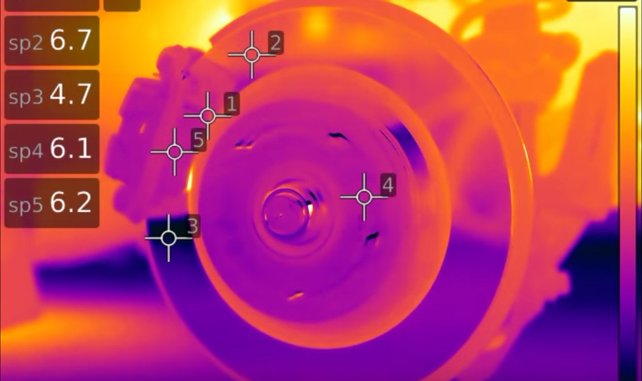To stop a car, one pushes on the brake pedal. This sends fluid to the individual brake systems at each wheel, forcing stationary brake material against a rotating disc or drum, thus slowing the car. The byproduct of this process is heat – technically speaking the brakes take the kinetic energy of the vehicle and convert it into thermal energy.
Most drivers don't give much thought to such things, but anyone who's ever spent time on a race course or had a stuck caliper will attest to just how much heat is created under braking. For those who haven't had the luxury of experiencing the lovely smell of hot brakes, the Engineering Explained crew put together this cool video showing precisely how hot things get, and where all that heat goes.
For those who have had the misfortune of trying to douse the flames of a wheel on fire, you'll find this video interesting too. That's because it features a very expensive Forward Looking Infra-Red (FLIR) camera pointed at the rear hub of a Honda S2000 as the handbrake is applied. Actually, even before the brake is applied the camera detects a bit of heat from a very slight warp in the rotor. Yeah, it's that sensitive.
What's particularly interesting about this video is seeing just how well brake pads can dissipate heat. With the handbrake engaged, the edge of the pad quickly heats up to over 200 degrees Fahrenheit, but the heat doesn't penetrate much into the pad. We aren't told what kind of brake pads are being used, but this is an excellent visual on how the pads alone can drastically affect heat and braking performance.
The next time we're buying pads at the parts store for a quick brake job, we'll certainly be thinking twice about going the cheap route after watching this video.
Related News



